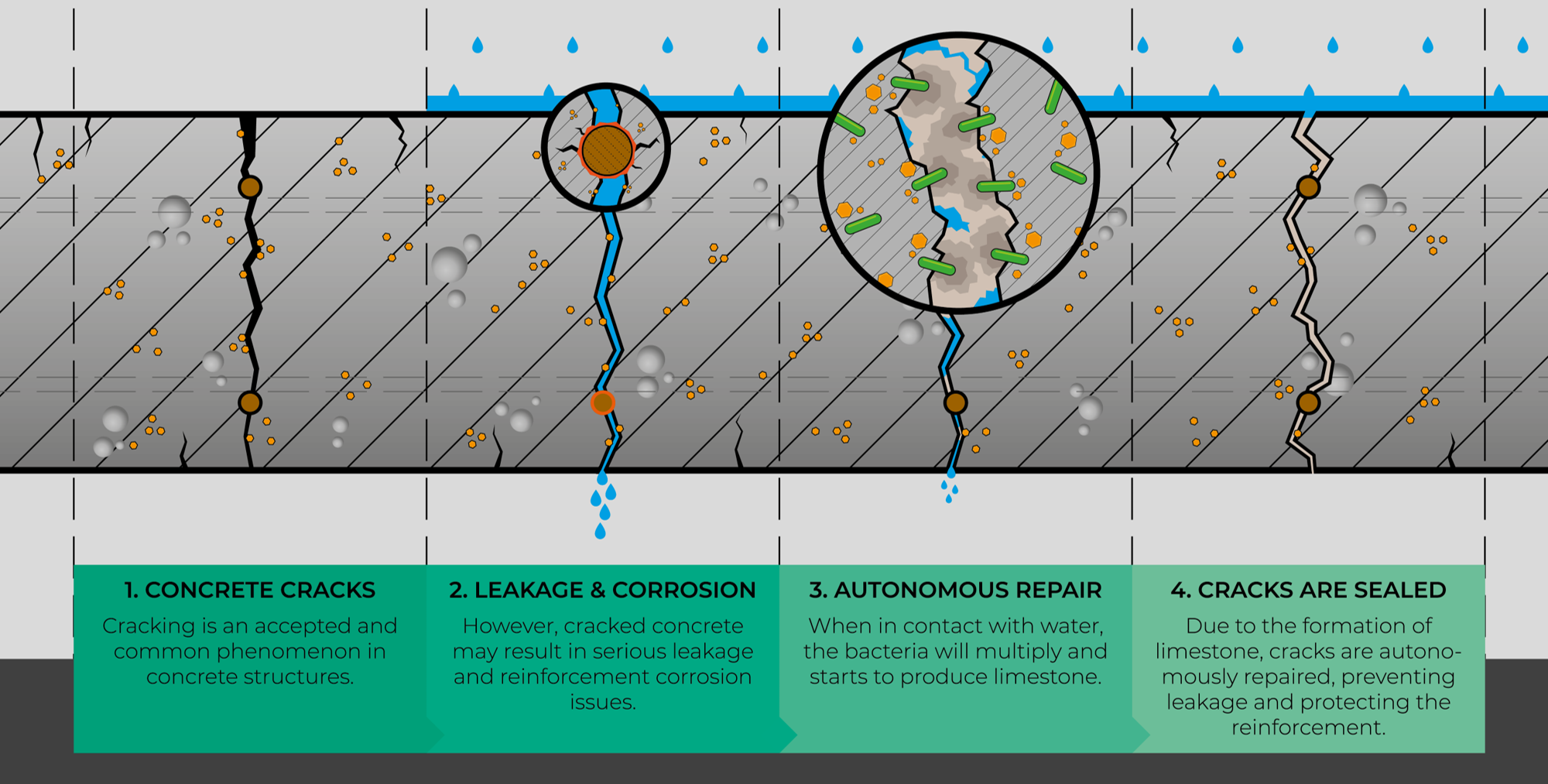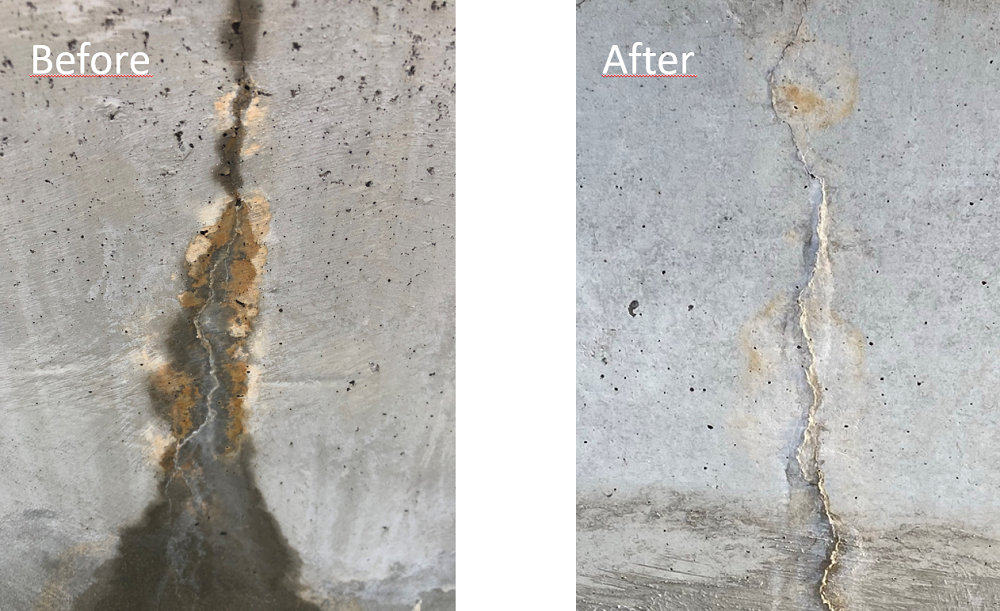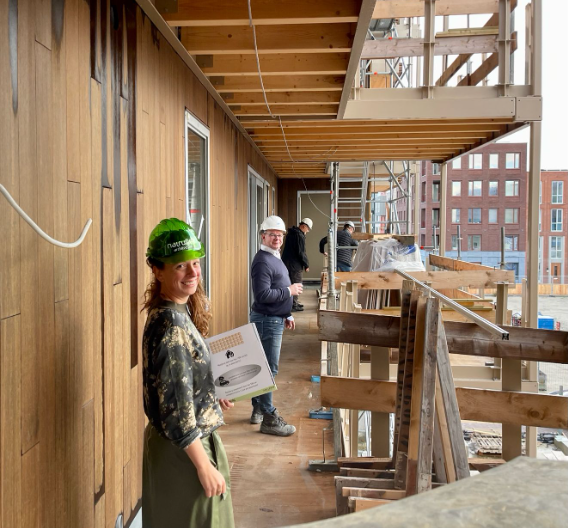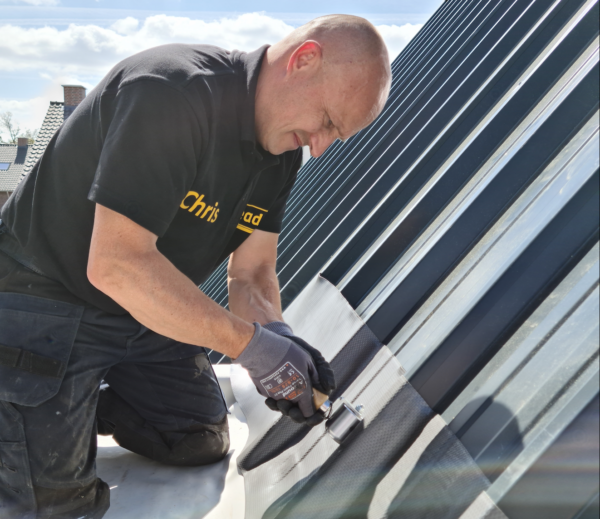Basilisk – Self-Healing Sustainable Concrete
Basilisk Self-Healing Concrete repairs cracks autonomously with the help of micro-organisms (bacteria). When the bacteria come into contact with oxygen and water, they convert nutrients to calcium carbonate (limestone). By reinventing concrete through this bio-based technology, less maintenance is required and the environmental impact of concrete can be reduced. Basilisk offers different products which can be used for both new and existing concrete structures.

"We are combining nature with construction materials"
Prof. Henk Jonkers, DELFT University
Self-healing agents encapsulated for over 200 years
At the core of all Basilisk Self-Healing Concrete products, the bio-based technology was developed and patented by the Delft University of Technology. It utilises materials that contain and stimulate the growth of living organisms. After successful testing, the interest from the (concrete) market grew strongly, and the commercial establishment of Basilisk Self-Healing Concrete became a fact. Working on various applications, they collaborate with reputed companies in the international concrete market.
Basilisk’s products are based on limestone producing micro-bacteria, which convert certain nutrients into calcium-carbonate (limestone) upon exposure to oxygen and moisture. So when a crack appears in a concrete structure, the microorganisms start repairing it autonomously. This innovative approach ensures that bacteria remain dormant in the concrete for up to 200 years.
The graphic below explains the process in detail:

Self-Healing process depicted:
When applied to the concrete via liquid, the micro-organisms find their way into the tiniest hairline cracks and convert the food sources into limestone. This limestone autonomously repairs the concrete structure.

Data regarding impact:
The foremost advantages of using Basilisk’s products are:
- Self-healing concrete seals cracks, making special coatings or waterproof membranes unnecessary.
- 40% less reinforcement required: Shrinkage reinforcement is reduced because larger crack widths can be accepted with self-healing concrete.
- 30-50% reduction in CO2 footprint: Due to the longer design life, the omission of membranes and less shrinkage reinforcement, the CO2 footprint decreases.
- As cracks repair themselves autonomously, less maintenance is required. This results in lower life cycle costs.
Basilisk believes that they can positively impact in the construction industry with strong partnerships. Therefore, they are constantly looking to collaborate with distributors, contractors, concrete producers, and clients in the Netherlands and abroad.



